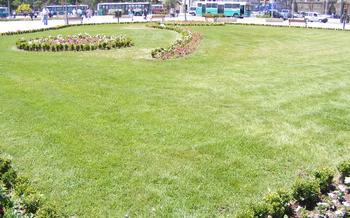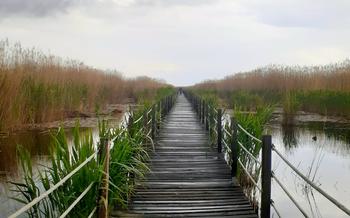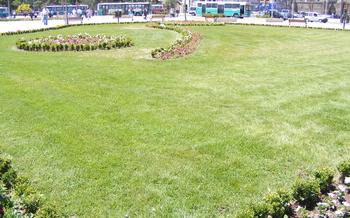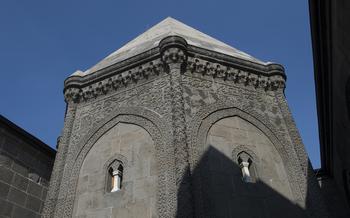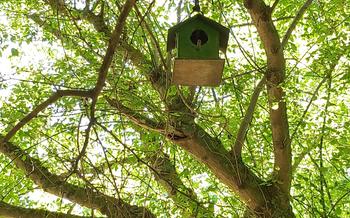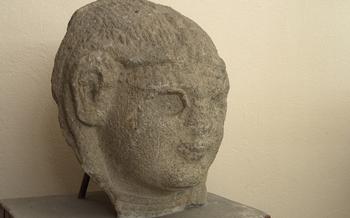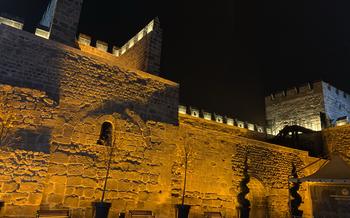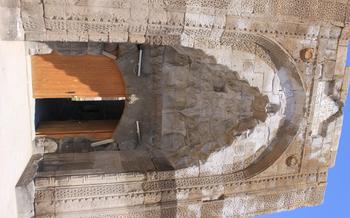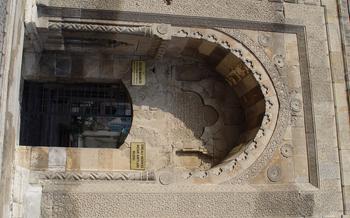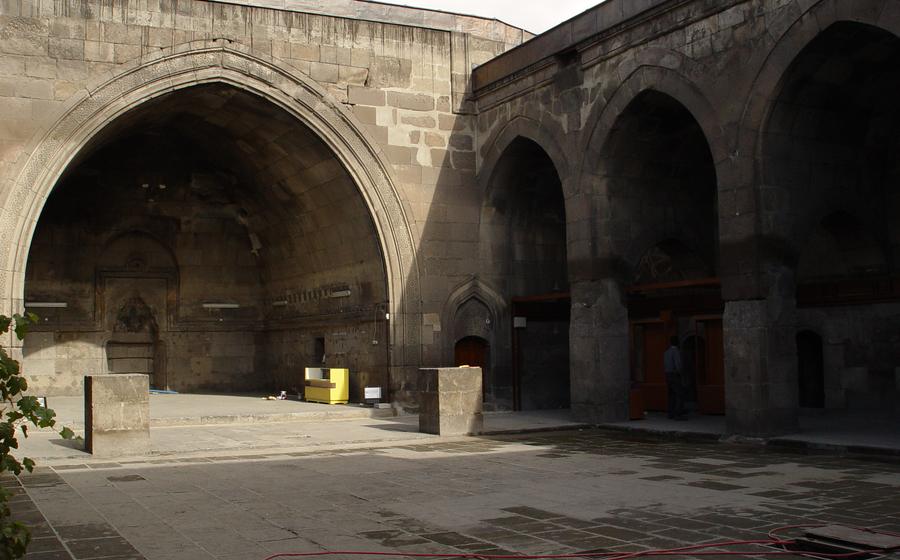
Hunat Hatun Complex
- Historical Significance
- Location and Accessibility
- Architectural Features
- Historical Context
- Cultural Significance
- Admission and Fees
- Guided Tours
- Photography and Videography
- Souvenirs and Shopping
- Food and Dining
- Nearby Attractions
- Accessibility for Disabled Visitors
- Dress Code and Etiquette
- Insider Tip
Historical Significance
The Hunat Hatun Complex, a testament to the Seljuk Empire's grandeur, stands as a symbol of Kayseri's rich history. Built in the 13th century by Sultan Alaeddin Keykubat I, the complex showcases a harmonious blend of Seljuk and Anatolian architectural styles. Its intricate carvings, decorative tiles, and elegant calligraphy narrate the story of a glorious era. The complex's restoration in recent years has breathed new life into its ancient stones, inviting visitors to explore the depths of its historical significance.
Location and Accessibility
The Hunat Hatun Complex is situated in the heart of Kayseri, Turkey, making it easily accessible for visitors. Located near the city center, the complex is a short walk from various hotels, restaurants, and shops. Public transportation options, including buses and taxis, are readily available, making it convenient to reach the site from other parts of the city. For those driving, ample parking facilities are available in the vicinity. The best time to visit Kayseri is during the spring or autumn months, when the weather is pleasant, and tourist crowds are manageable.
Architectural Features
The Hunat Hatun Complex showcases stunning architecture that blends Seljuk and Anatolian styles. Its exterior is adorned with intricate carvings, decorative tiles, and calligraphy, reflecting the artistic prowess of the Seljuk Empire. Arches, domes, and minarets, characteristic features of Seljuk architecture, add to the grandeur of the complex. The main entrance portal is particularly impressive, featuring elaborate carvings and inscriptions that depict scenes from Islamic history and mythology. Inside, the mosque boasts a magnificent mihrab, the niche indicating the direction of Mecca, which is intricately decorated with tilework and calligraphy. The madrasah, or Islamic school, features a central courtyard surrounded by classrooms and living quarters for students, each adorned with unique decorative elements. The tomb of Hunat Hatun, the wife of Sultan Alaeddin Keykubat I, is also located within the complex and is a testament to the Seljuk Empire's architectural legacy.
Historical Context
The Hunat Hatun Complex holds immense historical significance as a testament to the Seljuk Empire's reign and cultural influence in the region. Built during the reign of Sultan Alaeddin Keykubat I in the 13th century, the complex stands as a symbol of Seljuk power and architectural prowess. The Seljuk Empire, a prominent Islamic dynasty, ruled over a vast territory stretching from Central Asia to Anatolia, leaving behind a legacy of magnificent monuments and cultural achievements.
The construction of the Hunat Hatun Complex was commissioned by the sultan's wife, Hunat Hatun, a figure shrouded in mystery and intrigue. She is believed to have played a pivotal role in the empire's affairs, exercising significant influence over her husband's decisions. The complex serves as a testament to her piety and devotion to Islamic traditions.
During the Seljuk era, Kayseri flourished as a major cultural and economic center. The city served as a hub for trade and learning, attracting scholars, artists, and merchants from across the empire. The Hunat Hatun Complex, with its mosque, madrasah, and tomb, played a vital role in the intellectual and spiritual development of the region.
The complex's construction coincided with a period of significant architectural innovation within the Seljuk Empire. Seljuk architects blended traditional Islamic elements with Anatolian influences, creating a unique and distinctive style. The Hunat Hatun Complex showcases this architectural fusion, incorporating intricate carvings, decorative tiles, and elegant calligraphy into its design.
Cultural Significance
The Hunat Hatun Complex holds immense cultural significance as a symbol of Seljuk heritage and identity. It stands as a testament to the architectural prowess and cultural achievements of the Seljuk Empire, which played a pivotal role in shaping the history and culture of the region. The complex served as a center of Islamic learning and education, fostering the transmission of knowledge and promoting intellectual pursuits. Moreover, it embodies the legacy of Hunat Hatun, a remarkable woman who played a prominent role in the Seljuk court and commissioned the construction of this magnificent complex. Preserving and celebrating the cultural legacy of the Seljuk Empire is crucial for understanding and appreciating the region's rich history and diverse cultural tapestry. The Hunat Hatun Complex serves as a bridge between the past and the present, connecting visitors to the vibrant cultural heritage of Turkey and inspiring them to delve deeper into its fascinating history.
Admission and Fees
The Hunat Hatun Complex is open to visitors daily during specific hours. While admission to the complex is generally free, there may be a nominal fee for guided tours or special exhibitions. It's recommended to check with the local tourism office or the complex's official website for up-to-date information on admission fees and any special events or exhibitions that may require additional charges. Purchasing tickets in advance, especially during peak tourist season, is advisable to avoid long lines and ensure a smooth visit to this architectural masterpiece.
Guided Tours
Opting for a guided tour of the Hunat Hatun Complex is an excellent way to delve into its rich history and cultural significance. Knowledgeable and passionate guides bring the complex's stories to life, providing insights into its architecture, religious significance, and the lives of those who once inhabited its halls. Guided tours are available for individuals, small groups, or larger tour groups.
Booking a guided tour in advance is recommended to secure your spot, especially during peak tourist season. Tours typically cover the mosque, madrasah, and tomb, highlighting the intricate details and symbolism found throughout the complex. Guides often share anecdotes and historical context that bring the Seljuk era to life.
Whether you're a history buff, an architecture enthusiast, or simply curious about the cultural heritage of Turkey, a guided tour of the Hunat Hatun Complex is an enriching experience that will leave you with a deeper appreciation for this architectural masterpiece.
Photography and Videography
The Hunat Hatun Complex allows photography and videography for personal use, but it is essential to respect the sanctity of the site and follow the established guidelines. Flash photography is prohibited inside the buildings to preserve the delicate artwork and artifacts. Visitors are encouraged to capture the beauty of the architecture and interior details, ensuring they do not disturb other visitors or religious observances. Tripod use may be restricted in certain areas to prevent obstruction. By adhering to these guidelines, visitors can document their experience while respecting the cultural and religious significance of the complex.
Souvenirs and Shopping
The Hunat Hatun Complex offers visitors a chance to take home a piece of history through its souvenir shops. These shops are located within the complex and in the surrounding area, offering a variety of items that showcase the cultural heritage of the region.
Visitors can find a range of souvenirs, including postcards, magnets, replicas of the complex's architectural features, and traditional Turkish handicrafts. These items are a great way to commemorate a visit to the Hunat Hatun Complex and support local artisans.
When purchasing souvenirs, it is important to remember that bargaining is a common practice in Turkey. Visitors can often negotiate prices with shopkeepers to get a better deal.
By purchasing souvenirs, visitors not only get a memento of their trip but also contribute to the preservation of the cultural heritage of the region. The proceeds from souvenir sales often go towards the upkeep and maintenance of historical sites like the Hunat Hatun Complex.
Food and Dining
After exploring the historical wonders of the Hunat Hatun Complex, visitors can indulge in the culinary delights of Kayseri. The city offers a diverse range of dining options, from traditional Turkish cuisine to international fare.
For a taste of authentic Turkish flavors, head to one of the local restaurants near the complex. These restaurants offer a wide selection of dishes, including kebabs, pide (Turkish pizza), and gözleme (stuffed flatbread). Be sure to try the local specialty, Kayseri mantısı, which are small, ravioli-like dumplings served with yogurt and tomato sauce.
For those seeking a more international dining experience, Kayseri also has several restaurants serving dishes from around the world. Whether you're craving Italian pasta, Chinese noodles, or Indian curry, you're sure to find something to satisfy your taste buds.
When in Kayseri, don't miss the opportunity to try the city's famous pastırma, a cured beef delicacy that is often served for breakfast or as a snack. Baklava, a rich, flaky pastry filled with nuts and honey, is another must-try dessert in the region.
No matter what your culinary preferences, Kayseri offers something for everyone. Whether you're looking for a quick bite or a leisurely meal, you're sure to find a dining experience that will tantalize your taste buds and leave you wanting more.
Nearby Attractions
After exploring the Hunat Hatun Complex, visitors can venture beyond its walls to discover a wealth of other attractions that showcase Kayseri's rich history and cultural heritage. Just a short walk away lies the Kayseri Castle, an imposing fortress that offers panoramic city views from its ramparts. History buffs will delight in exploring the Kayseri Museum, which houses an impressive collection of artifacts from the region's past, including ancient pottery, jewelry, and manuscripts. For a taste of local culture, visitors can stroll through the bustling Kayseri Bazaar, where they can haggle for traditional Turkish handicrafts, spices, and souvenirs. Nature enthusiasts can escape the city's hustle and bustle by visiting the nearby Erciyes Mountain, a popular destination for hiking, skiing, and paragliding. By combining the Hunat Hatun Complex with these diverse attractions, travelers can create a comprehensive and unforgettable itinerary that immerses them in the captivating history, culture, and natural beauty of Kayseri.
Accessibility for Disabled Visitors
The Hunat Hatun Complex is committed to providing an accessible and inclusive environment for all visitors, including those with disabilities. To ensure a smooth and enjoyable visit, the complex offers several accessibility features:
-
Wheelchair Accessibility: The complex is wheelchair accessible, with ramps and elevators connecting different levels of the buildings. Designated wheelchair-accessible paths allow visitors to navigate the grounds and enter all major structures within the complex.
-
Accessible Parking: Reserved parking spaces for disabled visitors are available near the main entrance of the complex. These spaces are clearly marked and easily accessible, ensuring convenient parking for visitors with mobility challenges.
-
Accessible Restrooms: The Hunat Hatun Complex provides accessible restrooms equipped with grab bars, wider doorways, and accessible sinks. These facilities are designed to accommodate visitors with disabilities, ensuring their comfort and convenience.
-
Assistance: Visitors with disabilities who require additional assistance or have specific accessibility needs are encouraged to contact the complex in advance. The staff is trained to provide assistance and can arrange for additional accommodations or services to ensure a seamless and enjoyable visit.
Dress Code and Etiquette
When visiting the Hunat Hatun Complex, it is important to respect local customs and dress appropriately. Visitors should dress modestly, covering their shoulders and knees. This is a sign of respect for the religious significance of the site. Women are required to cover their heads with a headscarf when entering the mosque. It is also important to maintain a quiet and solemn demeanor within the complex, as it is a place of worship. By following these guidelines, visitors can show their respect for the local culture and enhance their overall experience at the Hunat Hatun Complex.
Insider Tip
For an unforgettable experience, plan your visit to the Hunat Hatun Complex during the early morning or late afternoon, when the golden rays of the sun cast a warm glow on the intricate carvings and tilework. Take advantage of the serene atmosphere to wander through the complex at your own pace, admiring the beauty of the architecture without the distraction of crowds. Immerse yourself in the tranquility of the surroundings and allow the complex's rich history and cultural significance to captivate you. Afterwards, venture into the vibrant neighborhood surrounding the complex, where you can explore local markets, savor delicious Turkish cuisine, and discover hidden gems that will provide a deeper understanding of Kayseri's rich heritage.
